Keeping the lid on an Irish revolution: the Gosselin–Balfour correspondence
Published in 18th–19th - Century History, Features, Issue 6 (Nov/Dec 2007), Volume 15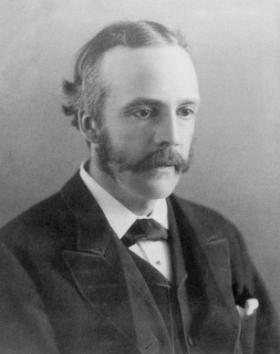
Arthur Balfour, chief secretary for Ireland from 1887 to 1891, with whom Major Nicholas Gosselin corresponded. (Multitext Project)
The Gosselin–Balfour papers show that by December 1887 a member of the Irish Party was employed by British intelligence to report on its internal difficulties, many of which were financial. For example, in June 1888 Gosselin’s agent reported that Sir T. G. Esmonde, a Catholic member of the landed gentry and Irish Party MP, had just donated a huge sum of money to help keep the party afloat. Nevertheless, four of its recently elected MPs for Ulster still had to resign owing to financial difficulties, and almost half the party’s MPs were perpetual absentees from Westminster because they could not afford to live away from their homes in Ireland. Although a frequent absentee himself, Parnell criticised these men, stating that he ‘will have no more impecunious members’ who could not support themselves. Yet Gosselin’s informant reported that Parnell himself was experiencing financial difficulties.
Conflicting interests within the Irish Party
The Irish Party also suffered from several internal conflicts of political interest. Formed in response to the introduction of Gladstone’s Royal University of Ireland scheme (1880), the Irish Party essentially represented two strands of Irish opinion from its inception: those who supported the hierarchy’s desire to persuade the government to accommodate Catholic higher education, and champions of land-law reform. These two interests did not always coincide, however, especially after the Land League introduced a more socialistic and, indeed, seditious element into Irish land agitation. Parnell’s cooperation with a Liberal government in suppressing the Land League and engineering the first Home Rule bill nominally brought the issue of devolution into the public domain for the first time in 1886. But the Catholic hierarchy, who played a crucial role in selecting Irish Party candidates for the 1885 general election (which almost quadrupled the number of ‘Parnellite’ MPs), maintained a strong dislike for the (anti-Catholic) Liberal party with which the Irish Party was now allied. Meanwhile, most former Land Leaguers did not share the view of Parnell, most of the Catholic hierarchy and the British government that a proper role for the landed gentry in Irish life needed to be found before any major reforms in the British administration of Ireland could conceivably take place (in 1888 the government even refused to extend the democratisation of local government in Britain to Ireland owing to security concerns). According to Gosselin’s agent, five ex-IRB men in the Irish Party were in favour of launching an extra-parliamentary agitation and cooperating both with rural IRB circles and with Michael Davitt in reviving the semi-revolutionary Land League. The party’s chief whip, Joseph Biggar, was Parnell’s most consistently loyal supporter but he was growing old (he died in February 1890) and could only hold these men back with some difficulty. Meanwhile, from outside the Irish Party, Davitt—who then occupied a unique position in being simultaneously close to the hierarchy yet on speaking terms with the IRB—privately detested Parnell and his stance on the land question. By 1887 Davitt was also refusing to attend any meetings of the National League executive after his call to defend the rural labourers’ rights was shouted down by T. M. Healy, who (according to Gosselin’s man) proclaimed ‘Damn the evicted tenants—they have had enough!’ With such widely contrasting opinions in National League circles, maintaining discipline within the Irish Party was no easy task and by May 1888 Gosselin’s agent believed an Irish Party intrigue to demote Parnell as its leader was sure to happen, sooner or later.
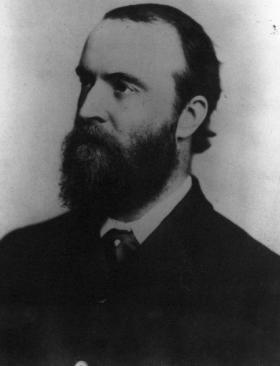
C. S. Parnell—Gosselin’s informant reported that Parnell was experiencing financial difficulties. (Multitext Project)
The initial reaction of prominent IRB figures to the first Home Rule bill was guarded and neutral: between August 1885 and February 1886, several expressed the belief that Parnell’s silence as to what its outcome might be probably reflected a political astuteness or a determination to keep his options open. By mid-July 1888, however, their view of Parnell had changed to one of dismay because he had called for a government commission of inquiry into sensational press allegations that he or the Land League had supported the Phoenix Park murders. According to Gosselin’s man, this action was also felt by many Irish Party members to have been completely unnecessary and potentially very divisive. This was because John Dillon, William O’Brien and many supporters of the Plan of Campaign (a moderate agitation, which Parnell opposed, calling for rent reductions) were then facing short jail sentences for not encouraging public cooperation with the government’s land courts. The IRB’s public spokesman, John O’Leary, wrote to the press arguing that what Parnell should do instead was withdraw his party from Westminster and make a stand for independence in Dublin before things got any worse for Irish nationalists. According to Gosselin’s agent, privately the Irish Party was aware that this view accurately reflected Irish nationalist public opinion, but the party (which, in conjunction with the Catholic hierarchy, had acquired a monopoly over the press in Ireland during 1885) determined that no public debate should be allowed to take place on this idea, while ‘Parnell says he feels strong enough to resist any influence of this character’. The fact that the only MPs that Gosselin’s man considered to be totally loyal to Parnell at this time were the moderate members of the party that represented the Catholic educational interest, led by T. M. Healy as well as T. D. Sullivan and W. M. Murphy (all of whom were close to Archbishops Walsh and Croke), may explain why public debate on the abstention idea seems to have been practically censored in the press until after the Catholic educational interest was slowly but surely secured between 1898 and 1908.
Who was Gosselin’s agent?
While there is no means of identifying Gosselin’s agent within the Irish Party for certain, his codename (‘L—’) combined with the fact that Gosselin was based in Lancaster points the finger of suspicion at T. P. O’Connor, the recently elected Irish Party MP for Liverpool and author of The Parnell movement (London, 1886), the first book to laud the Irish Party’s achievements. It is known for certain that O’Connor was relied on by successive British cabinets, as well as by the leadership of the Irish Party, to maintain harmonious relations between them right up until 1918, not least by containing or marginalising the small and independent-minded agrarian-radical wing of the party. Gosselin certainly had a very valuable informer in Liverpool. On 21 November 1890 this man reported that Davitt had just telegrammed Archbishop Croke from a Liverpool hotel regarding the Parnell divorce case, telling him to ‘lose not a moment in seeing Gladstone and inducing him to interfere, or a terrible disaster will be the result—Parnell has before placed himself in his hands—no time to lose’. Five days later, the Liberal Party leader called for Parnell’s resignation, leading to the Irish Party’s temporary implosion and Parnell’s downfall.
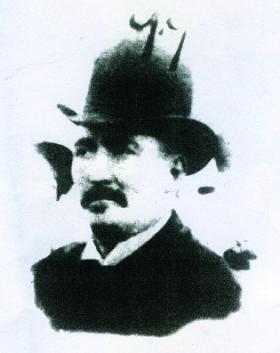
William McGuinness, northern England IRB leader—in conjunction with known British agents in America, he secretly funded John Walsh (a former northern England IRB leader who came close to being convicted of involvement with the Invincibles but was released on giving evidence) to come back from America as an agent provocateur in November 1887. (National Archives of Ireland)
Prior to Parnell’s call for setting up the Special Commission in 1888, the Tory administration, although trusting his fidelity as a Westminster MP, felt a strong distaste for the Irish Party leader because he was willing to allow his party members to associate with seditious elements. The ‘Parnellism and crime’ propaganda issued during 1887 in response to the Plan of Campaign aimed to contain this agrarian-radical wing of the Irish Party and dissuade them from actively supporting sedition along with the IRB. Indeed, during 1887 British intelligence actually attempted to counter whatever seditious elements might exist within the Irish Party not only by issuing sensational propaganda but also by creating bogus conspiracies.
Bogus conspiracies and agents provocateurs
Gosselin’s papers show that in November 1887 one former Irish-American Fenian now in British pay (F. F. Millen) was sent to London to attempt to implicate Joseph Nolan, a former IRB man, supporter of the Plan of Campaign and Biggar’s then deputy as Irish Party whip, in a bogus dynamite conspiracy and thereafter create bad publicity by ‘exposing’ him. British intelligence’s recent success in infiltrating the Irish National League and IRB in Britain (such as its hold over William McGuinness, the northern England IRB leader) could prove useful in creating such bogus conspiracies. For example, Foreign Office papers (FO 5/2044) indicate that, unknown to other IRB leaders, McGuinness, in conjunction with known British agents in America, secretly funded John Walsh (a former northern England IRB leader who came close to being convicted of involvement with the Invincibles but was released on giving evidence) to come back from America as an agent provocateur in November 1887. Walsh launched a bogus plot to assassinate Chief Secretary Balfour that, if men could be implicated and then exposed, would boost the retrospective claim of the Tory government that the Land League was behind the Phoenix Park murders. Although these bogus plots had no significant consequences, they show the extent to which British intelligence was prepared to play with fire in order to further its aim of dividing and conquering Irish nationalist public opinion—including the GAA.
In November 1887 Gosselin reported that he was carefully orchestrating ‘a little game’ with the GAA in order to frustrate the IRB’s plans. At that time a heated controversy had developed because of the Catholic clergy’s publicly expressed opposition to the IRB’s influence over the GAA. Remarkably, a recently discovered file in the Irish National Archives (DICS reports, South Western Division, report 1 March 1890) shows that Patrick Hoctor, a prominent IRB man who helped to instigate this controversy, had entered British pay (probably from 1887 onwards). As this controversy undermined IRB influence in the GAA, Hoctor was perpetually denied a senior place in the IRB by P. N. Fitzgerald and John O’Leary on the grounds of his having acted improperly at this time, but Hoctor (who fled to America during 1888) may never have been suspected of duplicity. Gosselin’s reports during 1889–90 indicate that Hoctor’s responsibility (along with at least one other man) had been to stay close to and subtly counteract every action of Fitzgerald, the principal travelling organiser of the IRB, who in turn had rumours of being either an informer or embezzler thrown against him. In April 1890, after a northern England IRB convention was held, Gosselin was able to report that Fitzgerald was pressing John O’Connor (the elusive IRB leader in Paris) to help him in making a great effort to revive the movement, but Gosselin was certain that ‘the IRB can’t be resuscitated’. One explanation for this confidence was that he had just been able to acquire some of Fitzgerald’s and O’Connor’s correspondence formerly in the possession of the IRB’s then treasurer (or possibly secretary) Michael Seery, a close associate of Hoctor (who returned to Ireland in February 1890). Inexplicably, six months later Seery died suddenly, aged 26, after the IRB reportedly launched an inquiry into how important documents in his possession had somehow gone missing. After
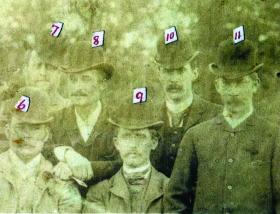
Patrick Hoctor (number 10), a prominent IRB man who was in the pay of the British from 1887, was more than likely Gosselin’s agent in orchestrating ‘a little game’ within the GAA. (UK National Archives, Kew)
acting contrary to all wishes of the IRB executive during the 1890s, Hoctor later went to America, but he would leave Clan na Gael in 1908, moving instead to London, where he went into business. In 1915, at a time of growing tensions between the Irish Party and Sinn Féin (many prominent Irish Party figures, including Healy and O’Brien, practically defected to the latter), Hoctor ran unsuccessfully as an independent ‘Home Rule’ candidate for Tipperary. He died in London in 1933 and had no children or close surviving relatives.
‘Friendly fire’
A potentially deadly element of British intelligence’s anti-Irish activities was its control of the Irish National Brotherhood (INB), a wing of the American Clan na Gael, which was behind the so-called ‘dynamite war’ (which was invariably organised by agents provocateurs). From 1887 onwards, all figures that British intelligence had acquired a hold over sought to bring the IRB into communication with, or under the control of, this American body to enable the government to destroy the Irish nationalist underground. This strategy gained in effectiveness from the late 1880s onwards. By 1894, as intelligence intrigues began leading to ‘friendly fire’ (deaths caused by men being shot on informers’ orders), the IRB, which had long suspected that British intelligence had somehow gained the upper hand, entered semi-retirement voluntarily, now knowing that this was true. Indeed, Gosselin’s reports show that the IRB’s main concern was now to prevent a new organisation being set up under the direction of the INB wing of the Clan, led by a New York man named William Lyman who, Gosselin noted, had ‘absolute control of the revolutionary fund’ and to whom ‘I am very close’ (a small Irish offshoot of the INB did exist from 1895 until about 1904). Gosselin’s papers indicate that during the 1890s Lyman funded various conspiracies involving agents provocateurs, including a Dublin plot that led to the aforementioned friendly fire, the ‘Ivory Case’ of 1896 (a bogus dynamite plot that led to a Glasgow trial) and an attempt to blow up Welland Canal in Ontario, Canada. During the 1896 ‘Ivory Case’ trial, Gosselin was actually prepared to direct one of his INB agents to appear in court, producing documents and names of some recently deceased co-conspirators, believing that such exposure was not particularly important, as the threat of any real security danger ever arising in Ireland again was ‘finally over’. Nevertheless, it was decided to keep a strong intelligence foothold within Clan na Gael (and, in particular, to keep a control over its treasury) in case of any future trouble. Indeed, Gosselin’s last action before retiring in April 1905 was to meet one of his American agents in Dublin.
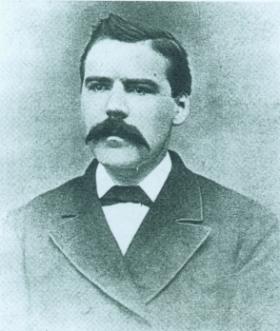
William Lyman, leader of the Irish National Brotherhood wing of Clan na Gael, was another of Gosselin’s agents who had ‘absolute control of the revolutionary fund’ and was behind various conspiracies involving agents provocateurs in the 1890s.
Conclusion
The Gosselin–Balfour papers show that the British government succeeded during the 1880s in stifling the potential threat posed by the ‘new departure’—the emergence of a powerful independence movement in Ireland. The Liberal Party may have issued propaganda in Ireland such as the Handbook of Home Rule (edited by Earl Spencer, a key figure in British security policy in 1886) that claimed that Whitehall had come to accept ‘the reality of Irish nationality’, but this propaganda did not represent the political reality. Both the Liberal and Tory governments’ real concern was to suppress Irish nationalism and strengthen the Union as much as possible. Indeed, by the time the Special Commission concluded in 1890, Dublin Castle was reporting that the moral authority of the Union in Ireland, which had seemed almost unsustainable during the early to mid-1880s, was progressively growing stronger than it had ever been before.
Particularly after the Special Commission concluded in 1890, the Irish Party essentially lived up to its critics’ claims that it was little more than a caucus whose only purpose was to ensure that the Catholic Church’s educational policy and the British government’s land policy would meet no effective political opposition, including from the party’s own ranks and supporters. The publicly expressed hope of the core leadership of the Irish Party (which changed little from the mid-1880s onwards) that Gladstone’s initial promise would eventually be fulfilled was arguably very misplaced (Gosselin’s agent claimed that every Irish Party member privately knew this). Devolution for the United Kingdom generally was not on the cards; although the question of devolution for Ireland would emerge again in 1912, the British government evidently reintroduced the idea at that time simply as a cover for implementing its plans for partition, irrespective of the concerns of both Irish Protestants and Catholics from Antrim to Cork.
The relative stagnation of political life in Ireland after Parnell’s fall compared to the situation during the 1880s also reflected the decline of the IRB, which barely existed as an organisation after the early 1890s because of the devastating setbacks it suffered during the mid- to late 1880s as a result of British intelligence’s manipulation of Clan na
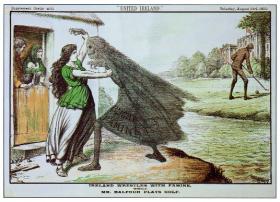
‘Ireland wrestles with famine while Mr. Balfour plays golf.’ (United Ireland, 23 August 1890)
Gael’s treasury. The IRB would not resurface as a significant political player until it rebuilt itself from scratch after 1916. It is significant, however, that although British intelligence expenditure in Ireland between January 1919 and December 1922 would equal and ultimately surpass that of the mid-1880s, the great anxiety exhibited by the British cabinet prior to 1886 regarding its inability to manage the situation in Ireland never again resurfaced to the same degree. As Gosselin reported in 1896, the ‘Irish question’ had already largely been ‘solved’ by the 1890s, as far as the British government was concerned. This was because, unlike the situation prior to the mid-1880s, sufficient preparations had now been made at a security and a high political level to deal with any potential eventuality. As events transpired, mostly because of the withdrawal of Irish MPs from Westminster in 1918, Britain would be forced to concede dominion status for most of the island rather than implement devolution. The only new, potential security difficulty raised for Britain during the Irish struggle for independence was that, for the sake of its own domestic and international security, it could not tolerate an independent Irish state of any kind being set up without first ensuring that it could not develop a significant military capacity. The outbreak of civil war several months before the final withdrawal of the British administration in December 1922, combined with the perpetual resolve of the (Clan na Gael-funded) anti-treaty IRA and of the Irish Free State (particularly after the IRB was outlawed in 1924) never again to reunite the IRA, helped to ensure that this would be the case.
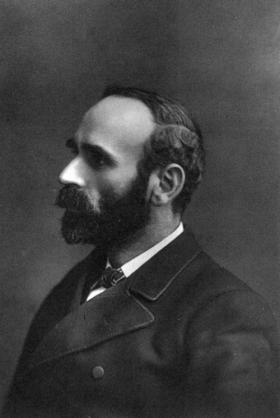
Michael Davitt, who occupied a unique position in being simultaneously close to the Catholic hierarchy yet on speaking terms with the IRB, privately detested Parnell and his stance on the land question. (Multitext Project)
Why was the British Home Office concerned as late as 2005 about the availability of intelligence papers from the 1880s? While there is no clear answer to this question, British security papers from the 1880s do demonstrate that this was the most critical period in modern Irish history in determining the ultimate outcome of all questions of Irish national governance. For this reason, if (as some have claimed) a ‘long Irish revolution’ can possibly be said to have taken place, then this revolution began in c. 1879 (not in 1916) and ended in 1923. The realpolitik of this 45-year period—including the issue of British security—still awaits comprehensive analysis from historians.
Owen McGee is the author of The IRB (Dublin, 2005).
Further reading:
D.G. Boyce (ed.), The revolution in Ireland 1879–1923 (London, 1988).
O. McGee, ‘Who were the Fenian dead? The IRB and the background to the 1916 rising’, in G. Doherty and D. Keogh (eds), 1916 (Cork, 2007).
M. O’Callaghan, British high politics and a nationalist Ireland (Cork, 1994).
The author wishes to thank Christy Campbell, who campaigned for the re-release of the Gosselin–Balfour papers, for drawing his attention to this material.
















